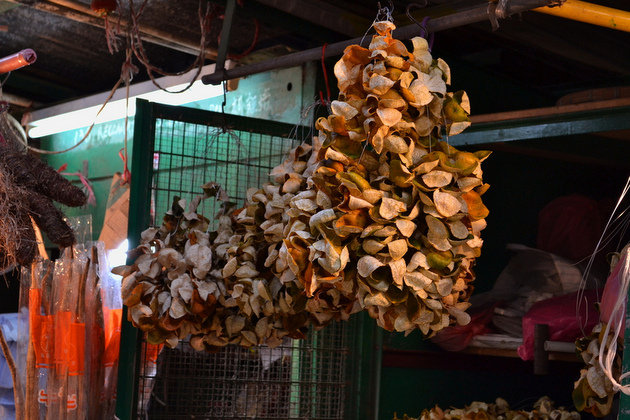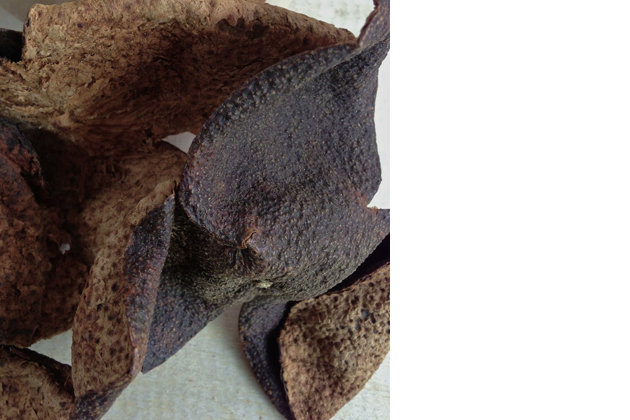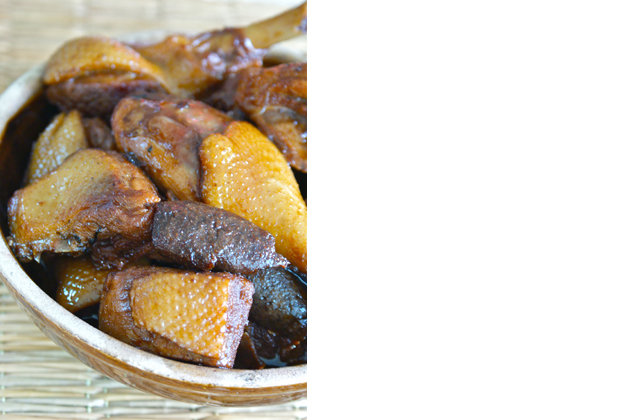
Save Your Skins
By Gastronaut Diary - Friday, Aug 02, 2013
Among the list of ‘must-have’ ingredients in Cantonese cooking, the dried tangerine peel is certainly among the top. Almost every Cantonese kitchen in Hong Kong and China, and perhaps anywhere in the world, stocks it.

The Cantonese use tangerine peel in everything from savoury dishes to soup and sweet dessert, fully capitalising on its distinct yet subtle sundried citrusy tang and its efficacy in purging unpleasant smells and the taste of gamey meat. The tangerine peel is also an established ingredient in traditional Chinese medicine, where it is used in medical concoctions for cough as it expel excessive phlegm from the lungs, and as an aid to improving digestion.
Dried tangerine peel comes in various grades with prices ranging from a few dollars to thousands of dollars per 50 grams – provenance being one of the deciding factors.
The best peels are from Xinhui, a district in Guangzhou, but their existence is precarious. From an expanse of about 140,000 acres before the Cultural Revolution (a social-political movement took place in China in the 1950s to 1970s), the orchards that produce the ingredient had dwindled to a mere 700 acres by the early 1990s. However, demand once again surged in recent years and the plantations have rebounded to some 2,000 acres.
The other — more critical — factor that determines worth is the age. It’s believed the older the peel, the better its taste, aroma, and body – somewhat like wine. Very old dried tangerine peel is especially treasured in Cantonese cooking, with age the peel’s color turns a beautiful dark golden brown and its scent becomes robust, earthy and aromatic. Such peels are literally worth their weight in gold.

When buying, always be mindful of where the peel comes from. While the most prized are those harvested in Xinhui, they have become scarce. The peels most commonly found in the market these days are from Guangxi, and they are less robust in taste and fragrance.
When peels are harvested, they are set to dry for about three years before being taken to the market. You can age your peels by simply storing them. Do not store dried tangerine peels in airtight containers, instead allow them to “breathe” in a dry and cool environment so that fermentation would continue to age the peel. Once a while, take the peel out for sunning to get rid of fungus and bacteria.

Braised Tangerine Peel Duck
Ingredients:
2 tbsp Oil 600g Duck, cleaned and chopped 4g Dried tangerine peel, soaked and albedo scraped 20g Spring onion, cut into 3cm length 20g Chinese celery, cut into 3cm length 35g Ginger, bashed 25g Rock sugar 1½ tbsp Dark soya sauce 4 tbsp Chinese wine 3 cups Water or stock ¼ tsp Salt
Methods:
1. Infuse spring onion and Chinese celery in oil under medium heat for 10 minutes. Sieve oil and set aside. 2. Heat infused oil and ginger till very hot. Stir-fry duck and rock sugar in high heat until the skin is slightly brown. 3. Pour Chinese wine and dark soy sauce, continuing to stir-fry until the liquid thickens. 4. Add water and boil for 3 minutes. Lower the heat and simmer for 45 minutes or until the liquid is reduced into thick gravy. 5. Season with salt and serve.
Note: As older tangerine peel is mellower and less citrusy than younger peel, lessen the amount of rock sugar the older the peel that you are using.


